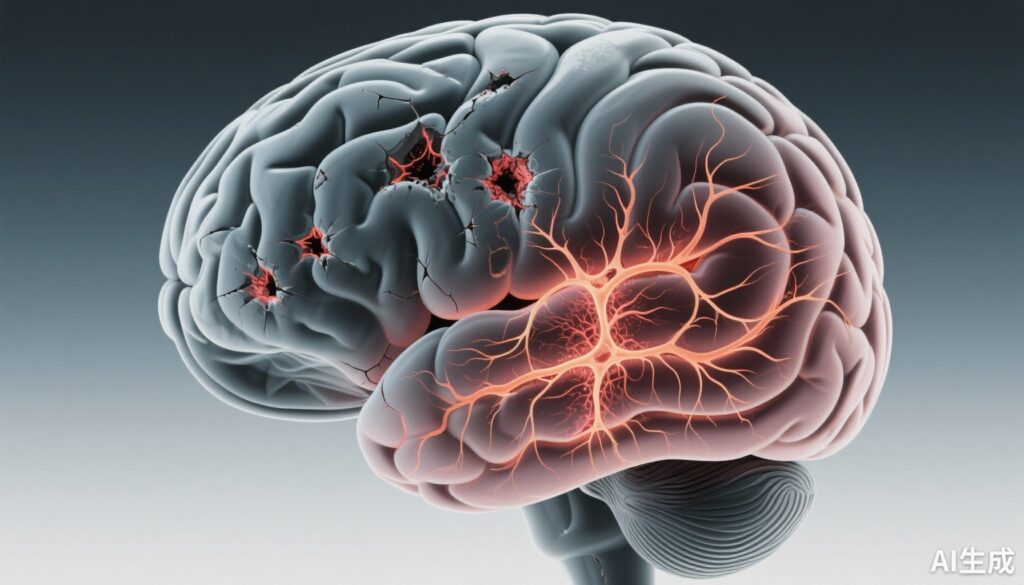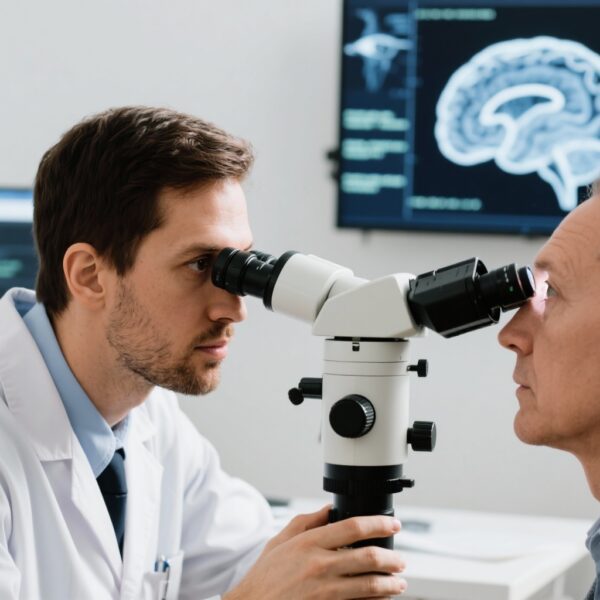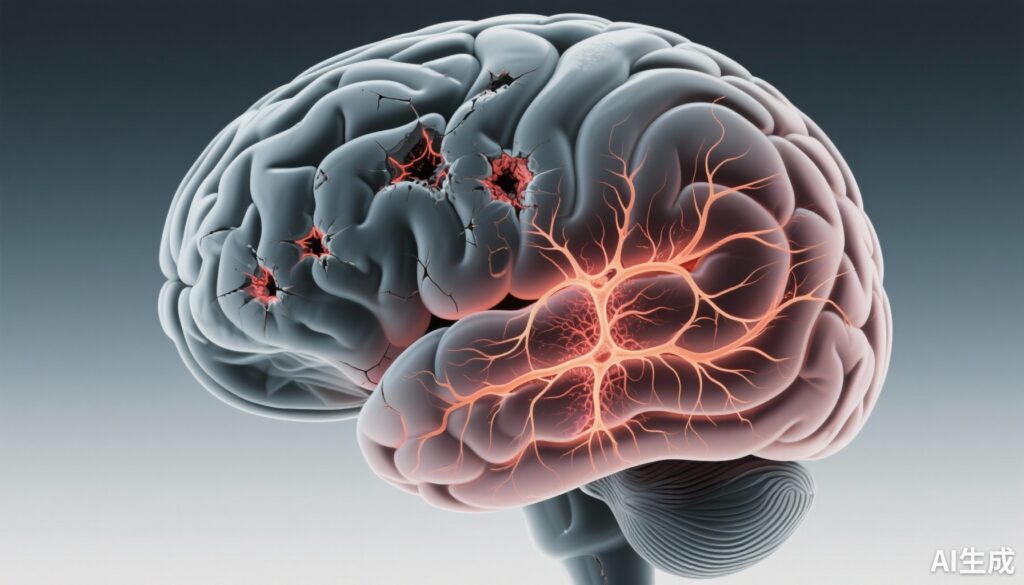Highlight
This large retrospective cohort study including 342,760 UK adults demonstrated a significantly increased risk of amyotrophic lateral sclerosis (ALS) within two years following documented traumatic brain injury (TBI), with no sustained risk beyond this period. The findings suggest that TBI may often be a consequence of early, subclinical ALS symptoms rather than a direct cause, indicating reverse causality in the TBI-ALS relationship.
This study leverages robust population-level electronic health records with matched comparators, providing comprehensive longitudinal follow-up and precise risk quantification using adjusted Cox proportional hazards models.
Study Background and Disease Burden
Amyotrophic lateral sclerosis (ALS) is a progressive neurodegenerative disorder characterized by motor neuron loss leading to muscle weakness, disability, and ultimately death, with an average survival of 3–5 years after diagnosis. While ALS is relatively rare, it imposes a significant clinical and socioeconomic burden. Identifying modifiable risk factors is crucial to improving prevention and early diagnosis.
Traumatic brain injury (TBI) has emerged as a potential risk factor for various neurodegenerative diseases. High-profile studies in athletes exposed to repetitive head impacts have linked TBI to increased ALS and other neurodegenerative diseases. However, evidence relating community-acquired TBI to ALS risk remains inconclusive. Clarifying this association is important for understanding pathophysiology, guiding clinical risk assessment, and shaping public health interventions.
Study Design
This retrospective cohort study accessed UK-wide electronic health record (EHR) data from the Clinical Practice Research Datalink (CPRD). The study population comprised 85,690 adults aged 18 years or older with a documented history of TBI between January 1, 2005, and December 31, 2020. They were matched by age, sex, and area deprivation to 257,070 adults without TBI, resulting in a total cohort of 342,760 participants.
All participants were followed for incident ALS diagnoses, identified through linked individual-level EHR data, until December 31, 2020. The study applied Cox proportional hazards regression models adjusted for confounders to estimate hazard ratios (HRs) and 95% confidence intervals (CIs) for ALS risk associated with prior TBI.
Key Findings
The cohort was evenly balanced by sex (50.1% male) with a mean age of 50.7 years (SD, 17.6). Median follow-up was 5.72 years (IQR, 3.07–8.82), accounting for 2.13 million person-years of observation. During this period, 150 incident ALS cases occurred, corresponding to an incidence rate of 7.05 per 100,000 person-years.
Compared to individuals without TBI, the overall risk of ALS was significantly elevated in those with a history of TBI (HR 2.61; 95% CI, 1.88–3.63). However, this increase was temporally dependent. The heightened ALS risk was confined to the first 2 years post-TBI (HR 6.18; 95% CI, 3.47–11.00), with no significant association observed thereafter.
This temporal pattern strongly suggests that the observed association may reflect reverse causality, whereby early, subclinical symptoms of ALS—involving muscle weakness and impaired coordination—predispose individuals to sustaining a TBI. Thus, TBI could sometimes be a sentinel event marking undiagnosed ALS rather than a causal risk factor.
Expert Commentary
This study makes an important contribution to the debate surrounding TBI and ALS risk by providing population-level evidence with large sample size and robust methodology. The use of matched comparators and long follow-up strengthens causal inference. Importantly, the identification of a temporal risk confined to the immediate post-injury period addresses a key limitation of prior studies.
However, limitations include potential misclassification biases inherent in EHR data, residual confounding, and lack of detailed TBI severity and repetitive injury data, which may influence ALS risk. The study also cannot conclusively rule out a causal role for TBI over longer periods or in specific subpopulations.
From a mechanistic perspective, the hypothesis that early motor neuron dysfunction leads to falls and consequent TBI aligns with known ALS prodromal features. Yet, the possibility that TBI might also accelerate disease onset or progression in susceptible individuals remains an area for further research.
Conclusion
This large UK-wide retrospective cohort study identifies an association between traumatic brain injury and increased risk of amyotrophic lateral sclerosis that is restricted to the first two years after injury. These findings support the hypothesis that TBI may often be a consequence of early undiagnosed ALS rather than a causal factor in disease development.
Clinicians should be aware that patients presenting with TBI may warrant careful neurologic assessment over time for early signs of motor neuron disease. Future prospective studies with detailed characterization of TBI severity, repetitive head impacts, and biomarker integration are essential to fully elucidate the complex relationship between TBI and ALS pathogenesis.
References
Zhu X, Russell ER, Lyall DM, Ho F, Mackay DF, Pell JP, Stewart W. Traumatic Brain Injury and Risk of Amyotrophic Lateral Sclerosis. JAMA Netw Open. 2025 Oct 1;8(10):e2535119. doi:10.1001/jamanetworkopen.2025.35119. PMID: 41037265; PMCID: PMC12492050.
Taylor CA, Bell JM, Breiding MJ, Xu L. Traumatic Brain Injury–Related Emergency Department Visits, Hospitalizations, and Deaths — United States, 2007 and 2013. MMWR Surveill Summ. 2017;66(9):1–16. doi:10.15585/mmwr.ss6609a1
Chen H, Richard M, Sandler DP et al. Head injury and amyotrophic lateral sclerosis. Am J Epidemiol. 2007;166(7):810-16.
Goldman SM. Environmental toxins and Parkinson’s disease history and clinical findings. J Parkinsons Dis. 2014;4(3):399-406.




